Antonio Gragnani est un luthier à part dans l’histoire de la lutherie, dont l’œuvre est synonyme de liberté et évoque les grandes heures du port de Livourne. Liberté, car Gragnani exerça toute sa vie à Livourne, en marge des autres écoles, ce qui lui permit d’élaborer un style unique. Résultant du dynamisme de la ville portuaire et des matériaux fournis par le front de mer, la facture d’Antonio Gragnani donne à ses instruments un charme singulier et évocateur. Vichy Enchères vous propose aujourd’hui de voyager avec ce remarquable violon de Gragnani, le luthier de Livourne…
Bien que le nom d’Antonio Gragnani soit connu dans le domaine de la lutherie, l’homme l’est beaucoup moins. Jusqu’à un temps avancé, nous ne savions effectivement que très peu de choses sur ce grand luthier. C’est au cours des dernières décennies que les recherches archivistiques ont levé le voile sur une partie de sa vie, dont voici un aperçu. Antonio Gragnani est né le 13 février 1728 à Livourne et est issu d’une famille de musiciens actifs dans la ville. Son père, également luthier, n’est autre qu’Onorato Gragnani – longtemps considéré par erreur comme l’un de ses fils.
Le travail d’Antonio Gragnani hérite en partie du savoir-faire de son père, notamment dans la conception des modèles, comme en rend compte la comparaison du violon de la vente du 2 juin 2022 avec un modèle de son père portant l’étiquette “Antonius Gragnani” (vente Vichy Enchères, 11 juin 2015). Celle-ci met en évidence une proximité stylistique dans la répartition des masses, la courbe des C et le dessin des coins gambés.
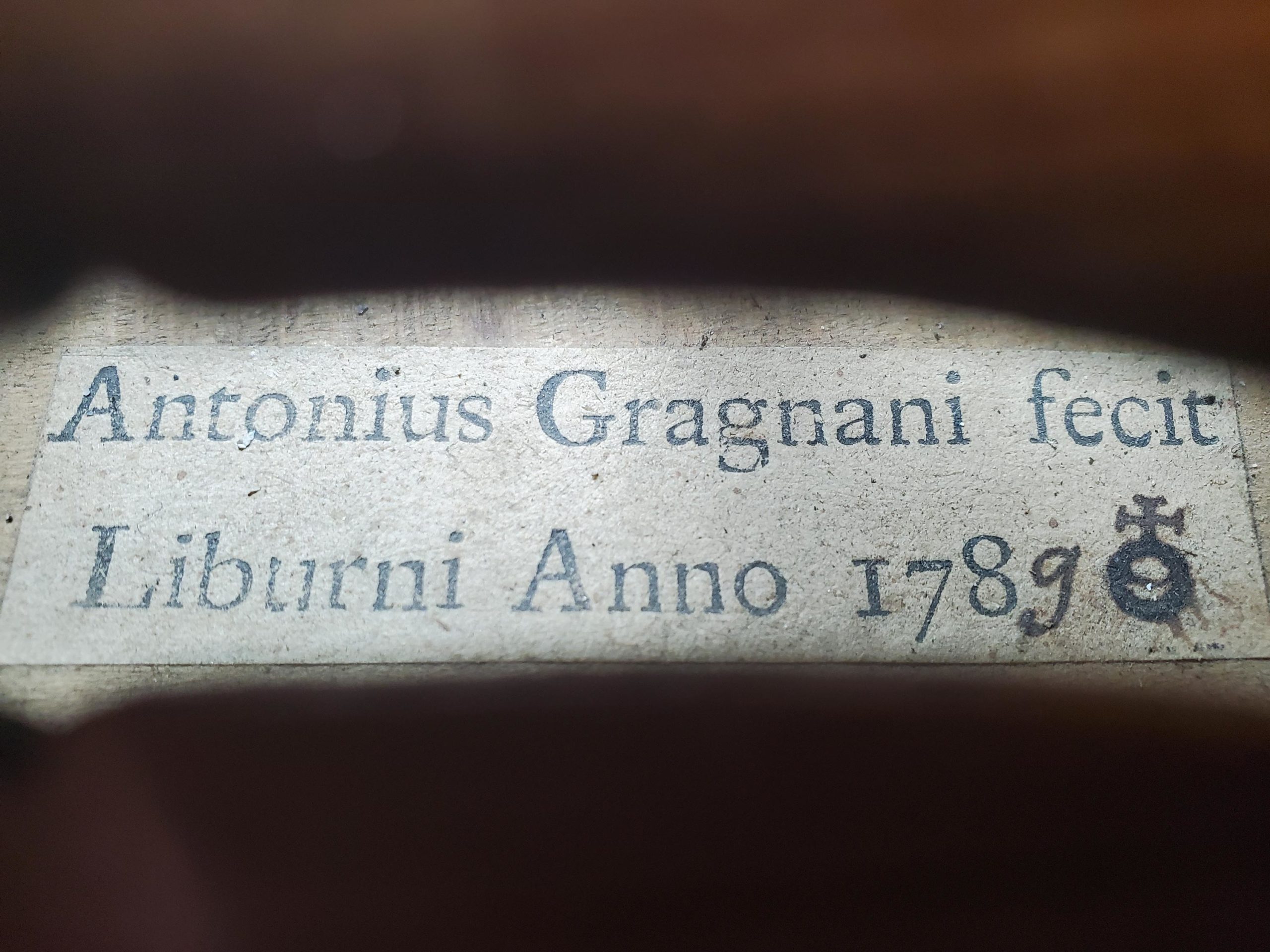
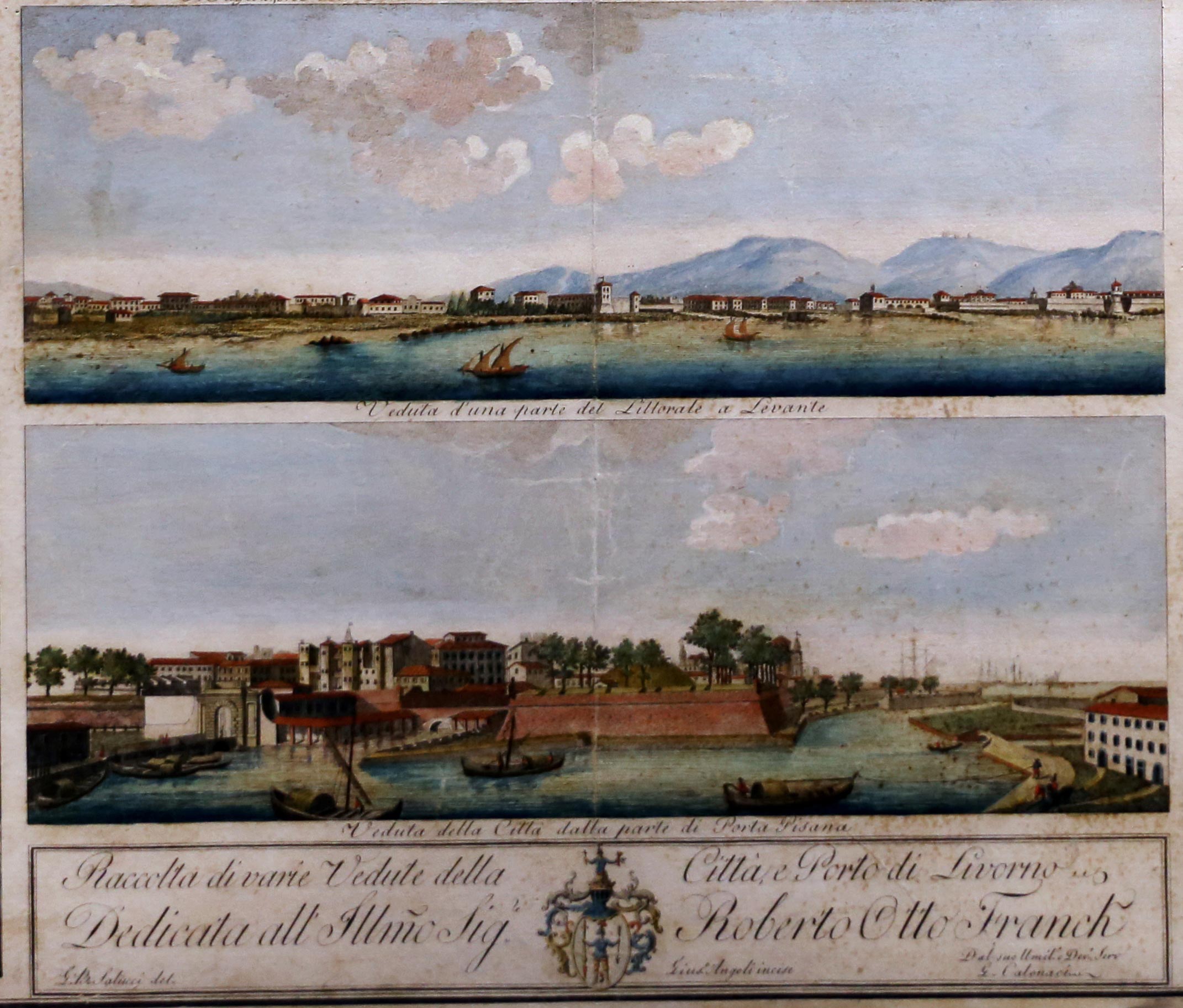
Antonio avait un fils luthier en la personne de Giovanni Pietro Gragnani (1765-) – enregistré dans divers registres sous le titre de chitarraio –, c’est-à-dire de fabricant d’instruments à cordes pincées et frottées. On sait également qu’il avait un deuxième fils prénommé Filippo (1768-), mais qui ne semble pas avoir exercé la même activité. La tradition de la lutherie s’est bel et bien perpétuée dans la famille puisque la fille d’Antonio, Maria Elizabetta, eut un fils – Gaetano Bastogi – également luthier à Livourne et réputé pour ses luths et cithares[1]. Dans son dictionnaire, René Vannes mentionne également deux autres luthiers appartenant à la famille Gragnani, Gennaro et Jacobo, tous deux actifs durant la première moitié du XVIIIème siècle.
[1] Laurent Grillet,Les ancêtres du violon et du violoncelle, 1901, T2, p 187.
Antonio Gragnani semble avoir exercé son activité de luthier exclusivement à Livourne qui était, depuis l’installation des Médicis en 1500, l’un des ports les plus importants de l’époque. Ainsi, bien que Crémone soit le centre de lutherie le plus célèbre d’Italie, la prospérité de la ville de Livourne favorisa le développement d’une lutherie locale. Antonio Gragnani est actif à partir des années 1740 jusqu’à la fin du siècle. La date de son décès est méconnue, mais elle survint après 1792 – année durant laquelle sa participation au mariage de son fils Giovanni Pietro est assurée.
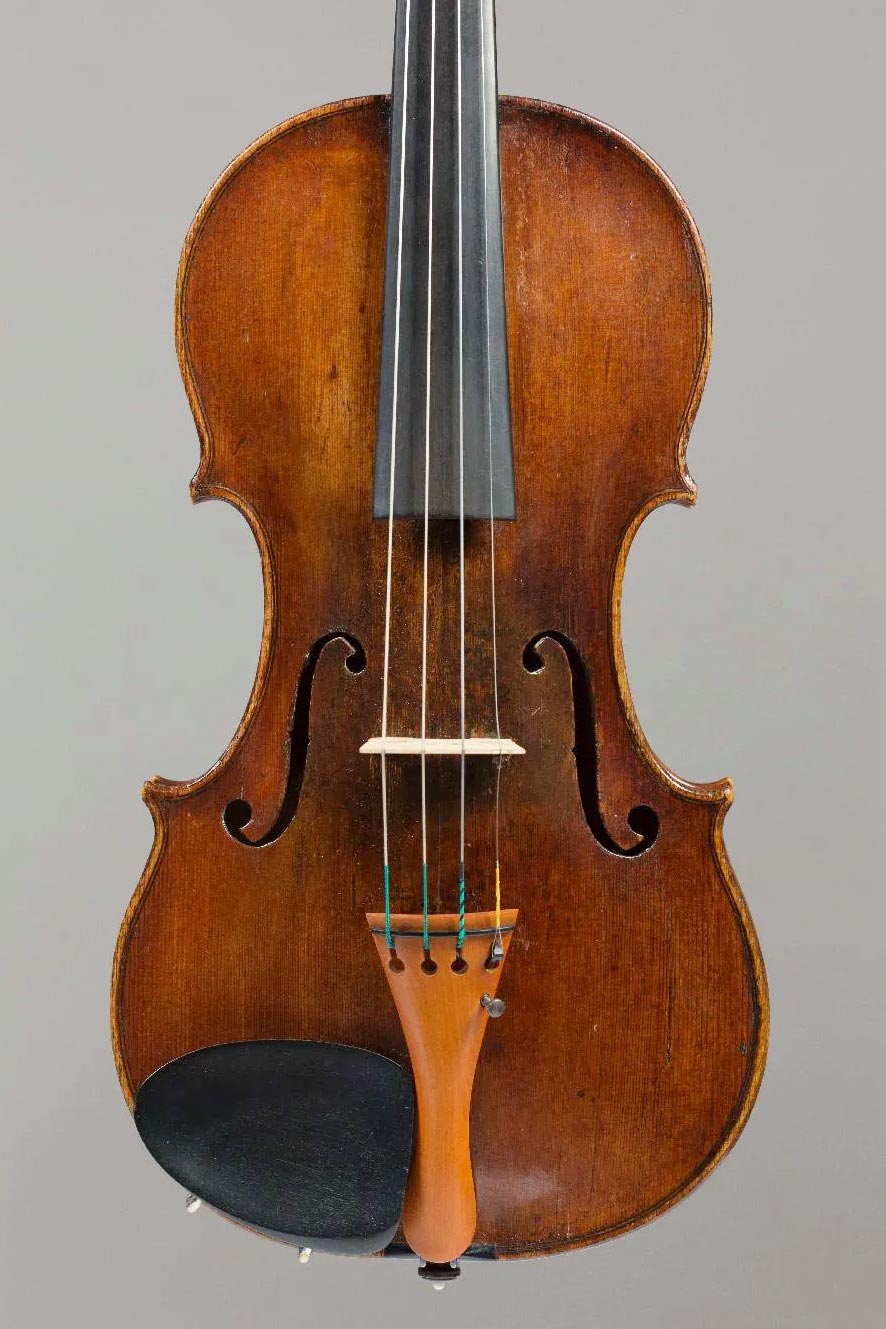
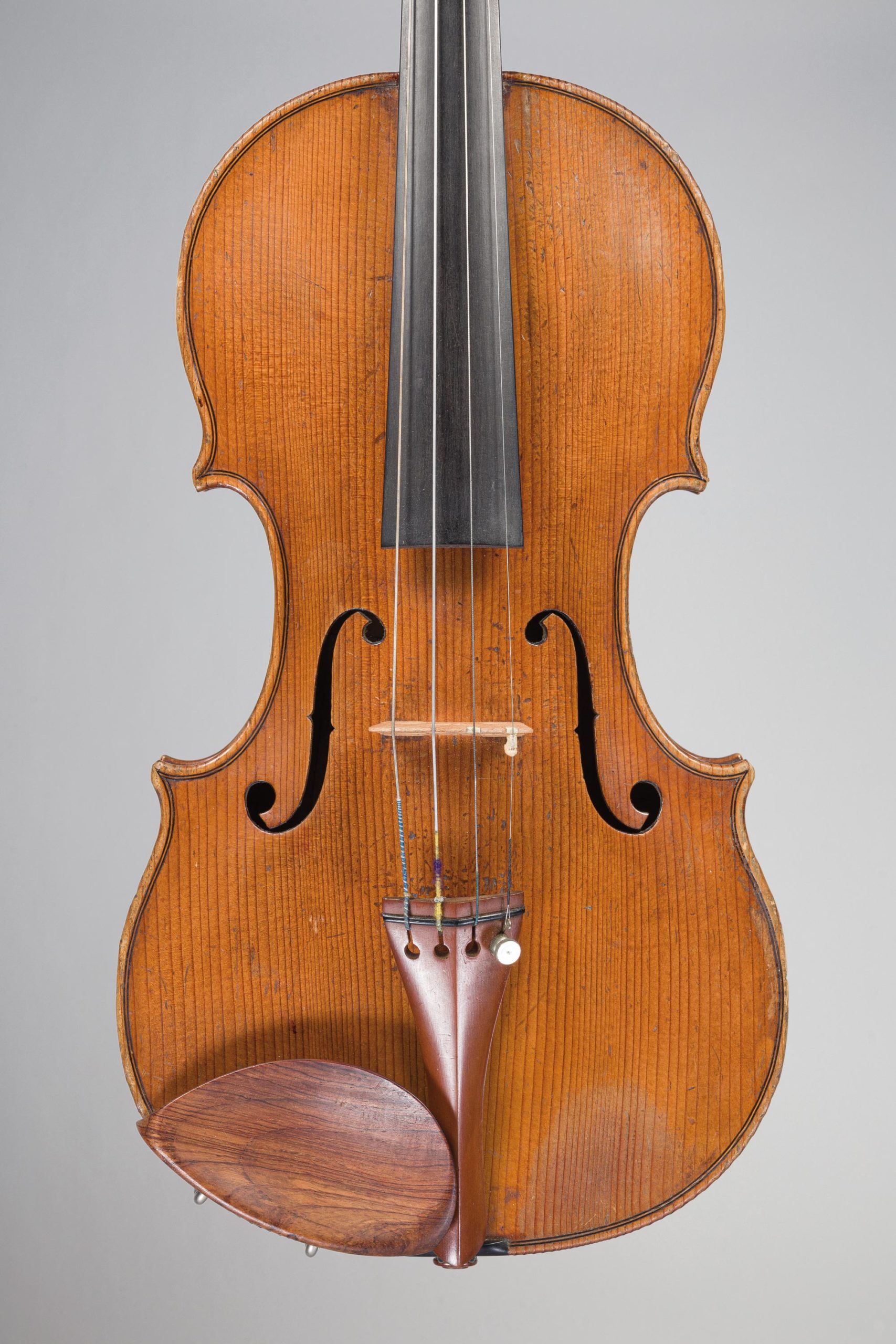
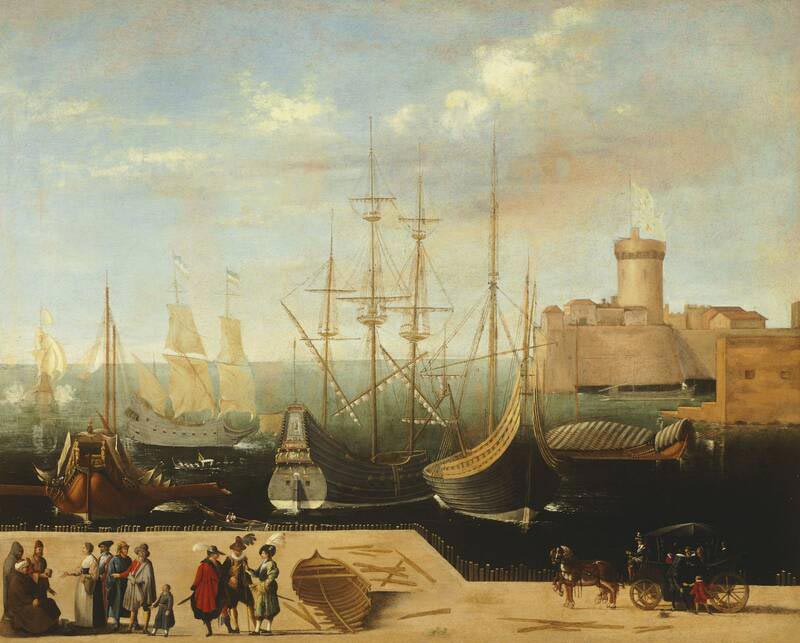
La production d’Antonio Gragnani est de haute qualité et a très tôt séduit les grands collectionneurs, et en premier lieu le Grand-Duc de Toscane Léopold II. Bien qu’il n’existe aucun document officialisant la relation entre les deux hommes, un violon aujourd’hui conservé à la Galleria dell’Accademia de Florence faisait originellement partie de la collection du Grand-Duc et apparait dans un inventaire de la collection de la famille en 1829. Réalisé avant 1770, l’instrument est caractéristique du style de la première époque de Gragnani, comme en témoignent son modèle, la taille et le dessin des ff, ou encore le traitement de la tête.
Plus récemment, un violon d’Antonio Gragnani de 1788 se trouvait dans la collection d’un des plus grands collectionneurs de la fin du XXème siècle, Laurence Witten, à qui le Metmuseum rendait hommage en 2015. Witten avait un oeil aiguisé en ce qui concerne le choix de ses instruments et sélectionnait “the earliest, best preserved, and historically most important bowed stringed instruments known to survive in order to trace more systematically the early history of violin making in the chief Italian centers. » Cette collection démontre l’importance de Gragnani, puisque l’instrument y prenait place à côté d’un violoncelle d’Andrea Amati ou encore d’un alto d’Andrea Guarneri.

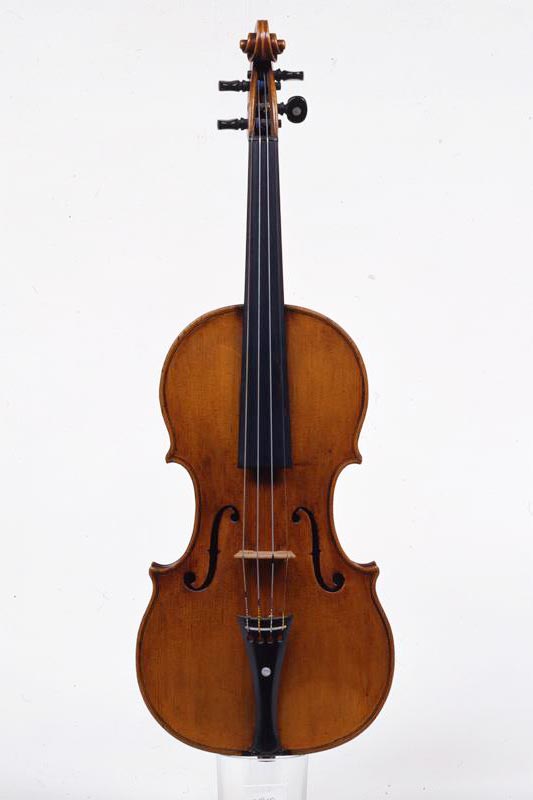
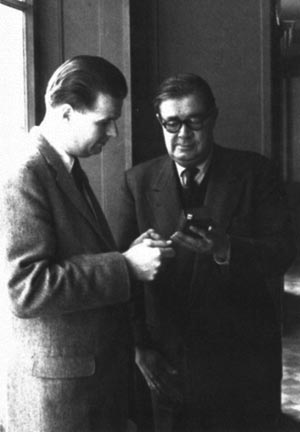
Les plus grandes collections muséales comprennent également des instruments d’Antonio Gragnani, attestant une fois de plus de l’importance du luthier de Livourne – d’autant plus que ses instruments sont assez rares. Les modèles conservés dans les musées permettent de donner un aperçu de l’étendue du savoir-faire de Gragnani et de la diversité de sa production. Ainsi, le Grassi Museum für Musikinstrumente de l’Université de Leipzig conserve une superbe viole réalisée en 1791. Ce type d’instrument semble exceptionnel dans la production de luthier. Notons toutefois qu’Antoine Vidal signale dans son ouvrage sur les instruments à archet, un par-dessus de viole à cinq cordes qui figurait à l’exposition du Kensington Museum de Londres en 1872 et qui portait l’étiquette “Fecit anno 1741”[1]. Cet instrument est certainement celui aujourd’hui conservé au Victoria & Albert Museum, bien que le catalogue du musée donne une autre lecture de l’étiquette du pardessus de viole : “Antonius Gragnani fecit / Luberti anno 174(?)1”[2]. Les instruments d’Antonio Gragnani témoignent toujours d’un style personnel très distinctif et démontrent le haut degré de recherche stylistique du luthier, à la personnalité affirmée.
Le Staatliches Institut für Musikforschung de Berlin conserve également un instrument assez rare dans la production du luthier, un alto daté de 1786. En effet, les altos sont moins fréquents dans l’œuvre de Gragnani et depuis 1930, seuls trois sont apparus sur le marché.
Notons enfin que les violoncelles sont également particulièrement rares. Le luthier semble ainsi avoir fait du violon sa spécialité, bien que l’on en connaisse qu’un nombre raisonnable. Le National Music Museum de l’Université du Dakota du Sud en conserve un modèle réalisé en 1788, soit un an avant la fabrication de celui de la vente Vichy Enchères du 2 juin 2022. Malgré leur proximité stylistique, les ouïes du violon du National Music Museum sont légèrement moins fines et les coins sont encore très étirés, rappelant le modèle crémonais, alors que l’instrument du 2 juin suit un modèle plus personnel.
[1] Antoine Vidal, Les Instruments à archets, tome I, 1876
[2] Howard Schott, Anthony Baines, Catalogue of Musical Instruments in the Victoria and Albert Museum, V&A publications, 2002
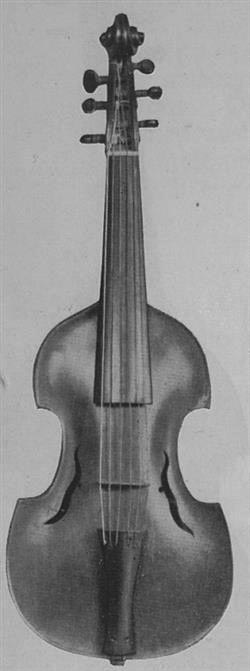
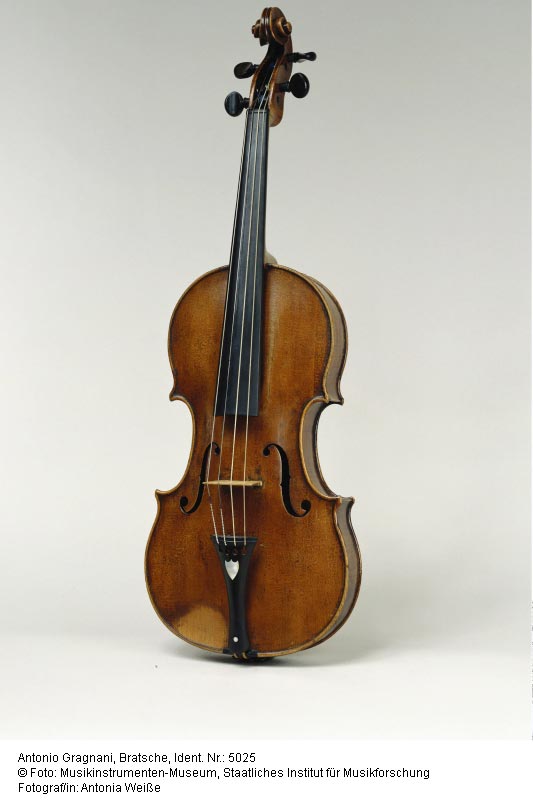
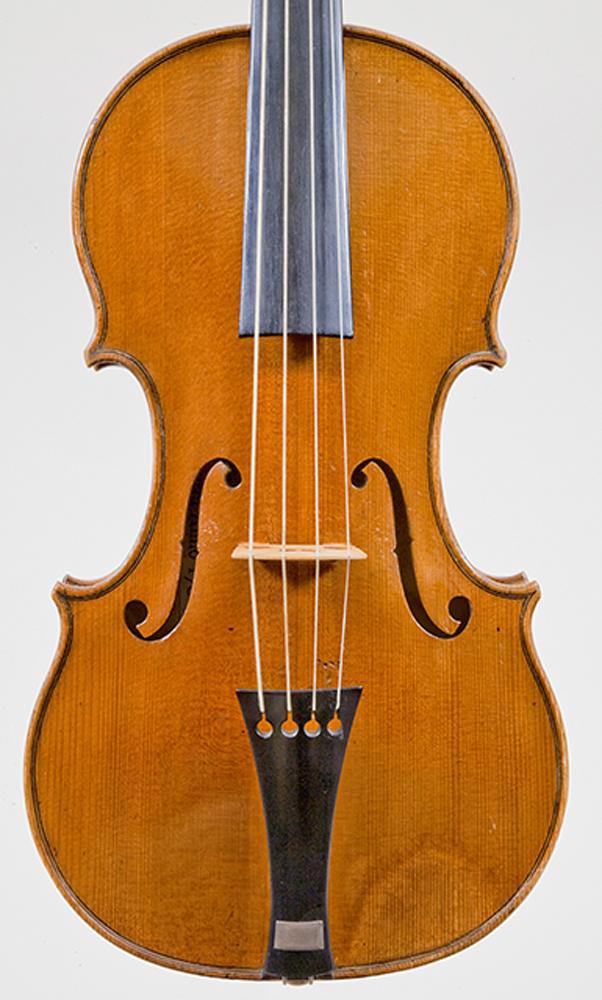

Le remarquable savoir-faire d’Antonio Gragnani résulte d’un savant équilibre entre regard sur les maîtres crémonais et élaboration d’une facture personnelle. De fait, le luthier est connu pour ses violons élégamment conçus, souvent influencés par le travail de Stradivari, Guarneri ou encore Amati, mais au style toujours très identifiable. Ses instruments sont réputés et appréciés des musiciens pour leur ampleur tonale et leur puissance sonore.
A titre d’exemple, le Smithsonian National Museum of American History de Whashington conserve un beau violon de 1783, de modèle Amati, mais de forme plus allongée et au chevillier plus petit.
Réputé pour son savoir-faire minutieux, l’affinité de Gragnani pour les Crémonais est évidente, sans pour autant que son travail ne tombe dans la copie. Il réalisa notamment un certain nombre de violons de type Stradivari, mais en réduisant le modèle pour tendre vers des versions plus délicates, à l’image du violon étiqueté 1784, conservé à la Galleria dell’Accademia de Florence et provenant de l’ancienne collection d’Assunta del Bello.
Le violon de la vente du 2 juin 2022 est également réalisé d’après un modèle Stradivari, mais est caractéristique du travail de Gragnani. En effet, les instruments de Gragnani ont des têtes assez allongées, minces et très typées. De manière générale, les instruments de Gragnani sont très en courbes. La volute de ce violon est fine et élégante, de forme ovale et étirée verticalement, harmonieusement creusée et à coquillon saillant. L’arrière de la coulisse de tête est assez forte et le chevillier dessine une forme en “S caractéristique.
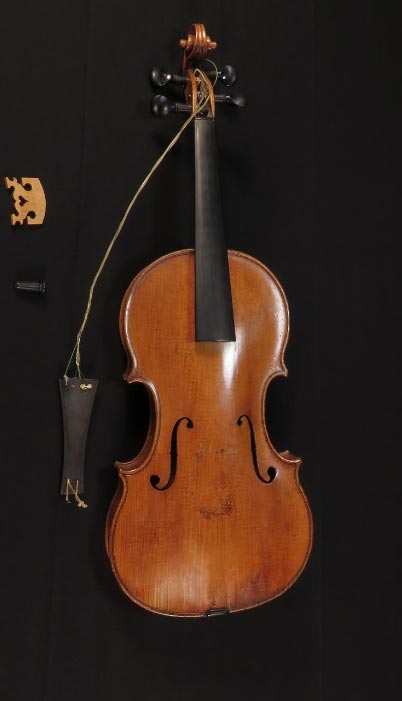
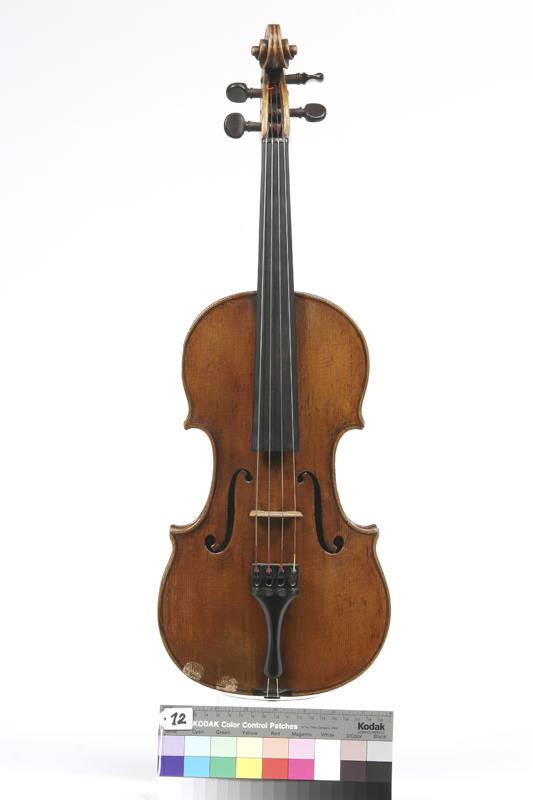
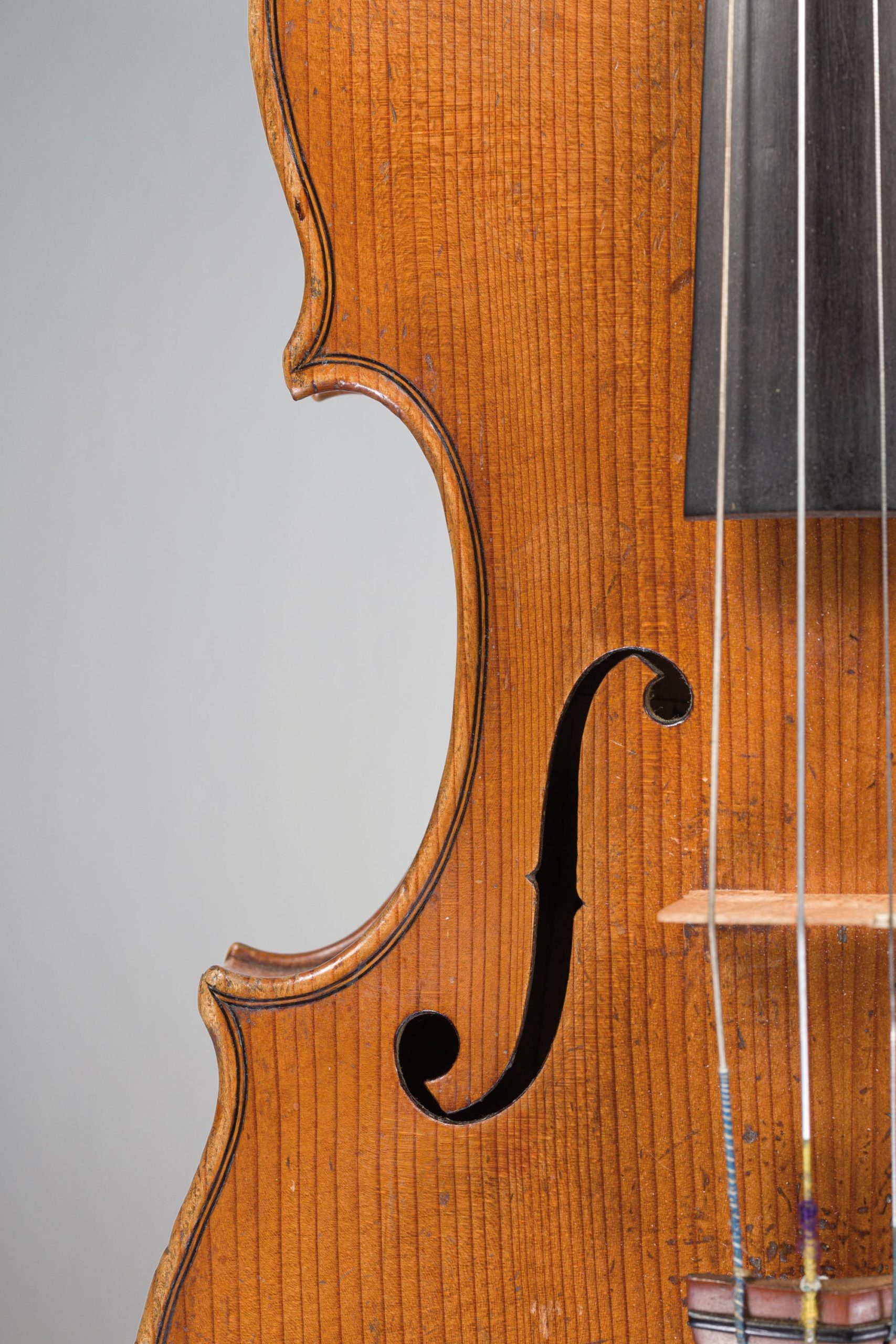
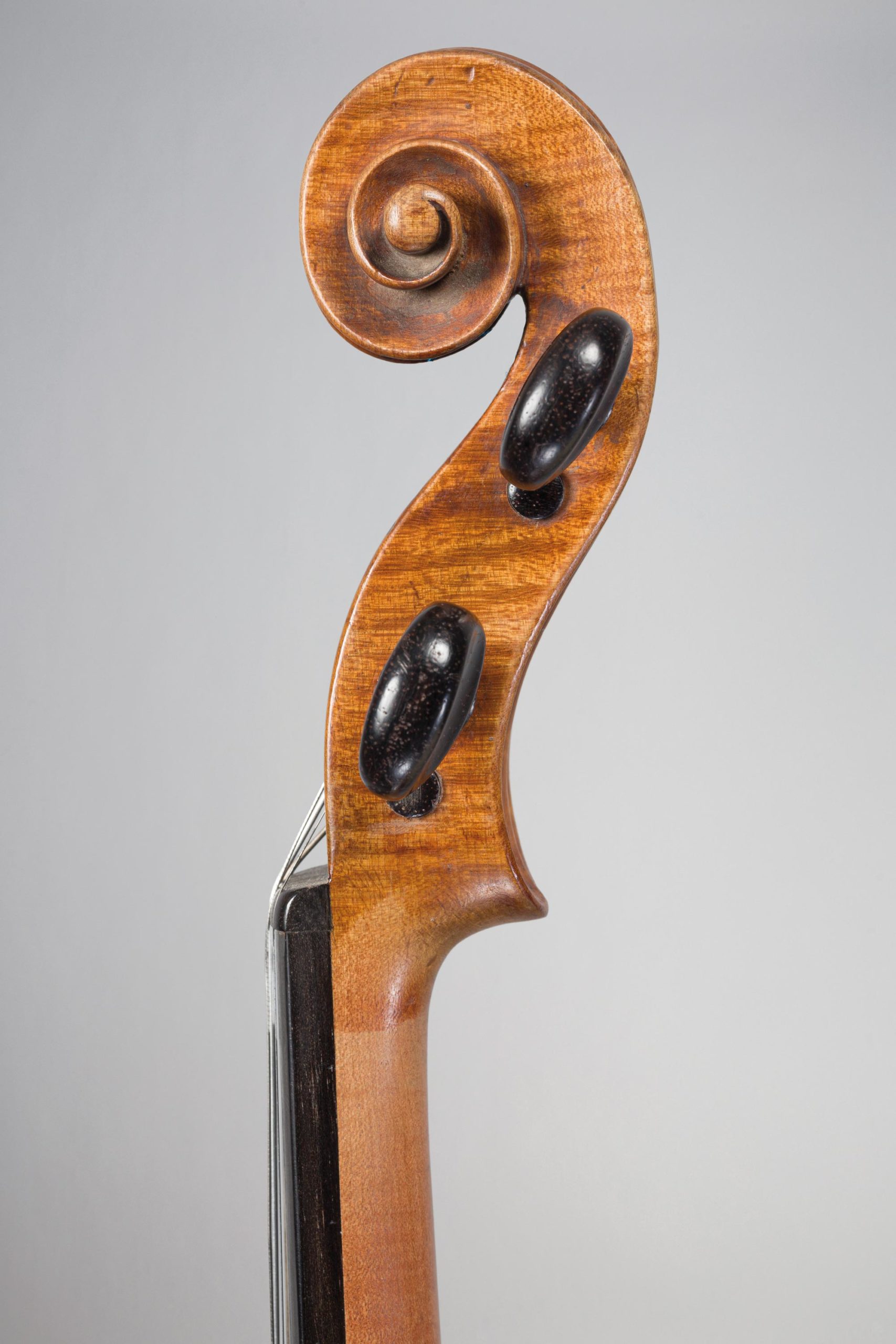
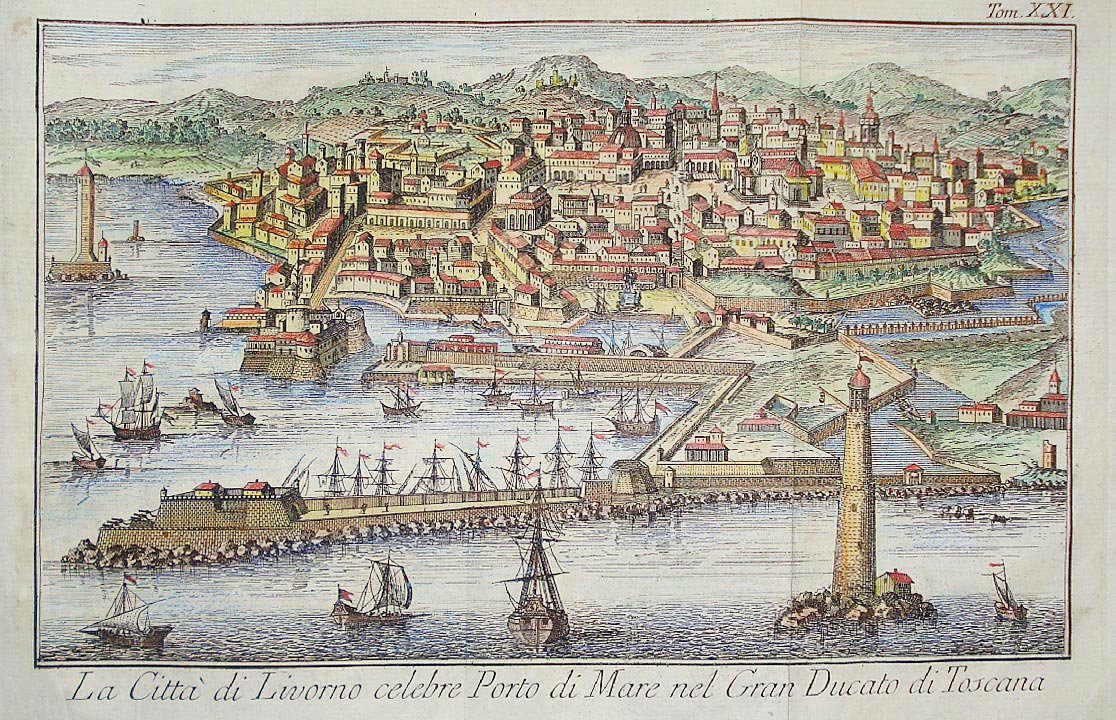
La singularité de son travail s’explique en partie par son activité à Livourne, ville dans laquelle il travailla toute sa vie après une probable formation à Florence qui n’imprégna pas son style. Dans les années 1700, le port de Livourne était très important et la ville, devenue une plaque tournante de marchandises, commerçait avec le reste de l’Europe. En 1737, Livourne bénéficia du statut de port franc et fut exemptée de services de douanes. Elle devint alors le principal port de débarquement de personnes et de marchandises en provenance et à destination de l’Italie. Ce contexte pourrait expliquer les influences étrangères, notamment flamandes et allemandes, perceptibles dans certains instruments de Gragnani.
En outre, l’emplacement en bord de mer de la ville fournit à Antonio Gragnani des matériaux différents de ceux utilisés par ses contemporains travaillant dans les terres, singularisant ainsi sa production. Ainsi, Gragnani est l’un des seuls luthiers italiens à réaliser ses filets en fanons de baleine – une technique que l’on retrouve chez les flamands. Ce matériau donne de la brillance aux filets et confère aux instruments une allure raffinée.
Le violon de la vente du 2 juin 2022 en offre un bel exemple avec ses filets très soignés qui réfléchissent la lumière. L’examen sous UV permet de constater qu’il s’agit bel et bien de fanons de baleine, puisqu’ils apparaissent blancs sous lumière noire.
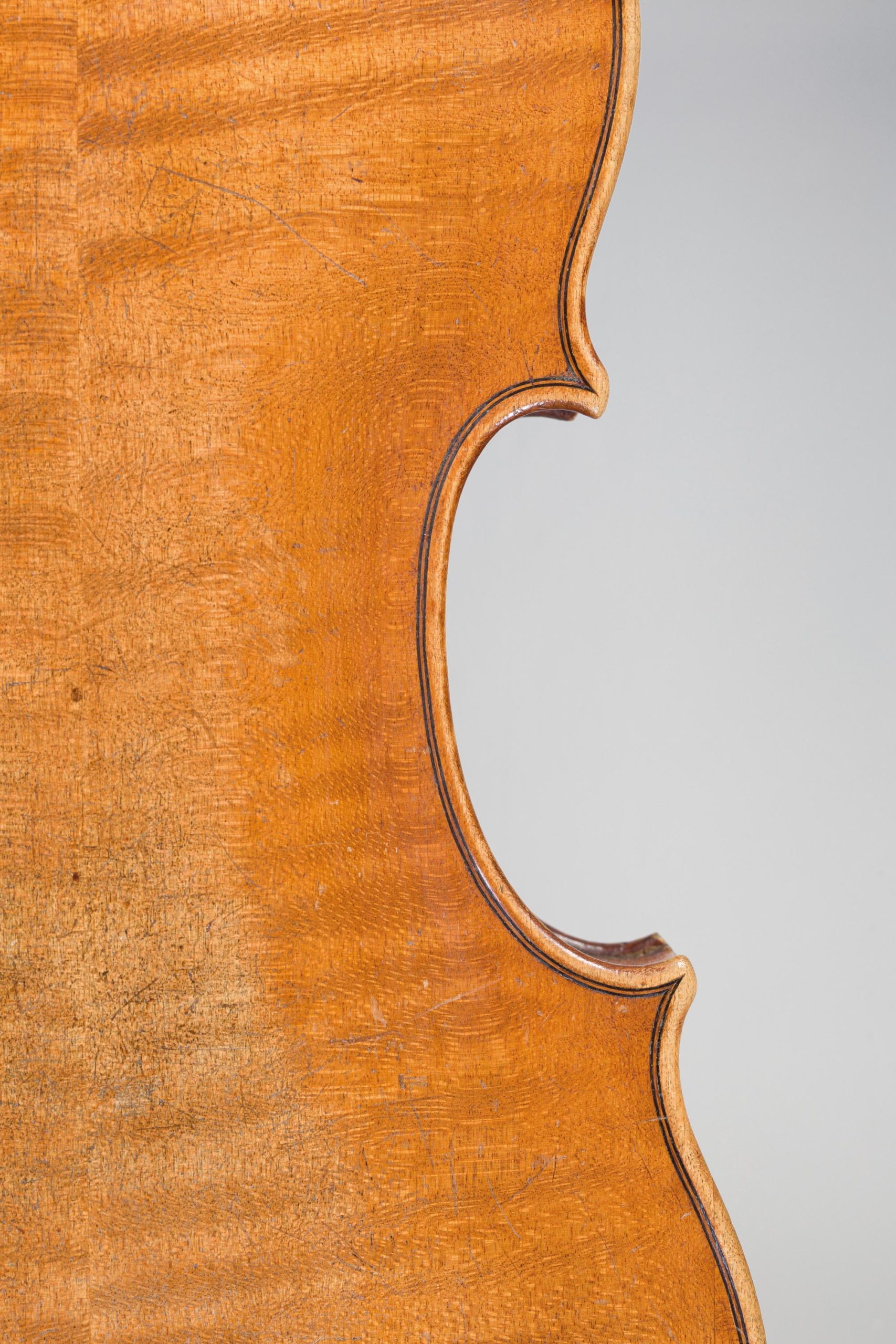
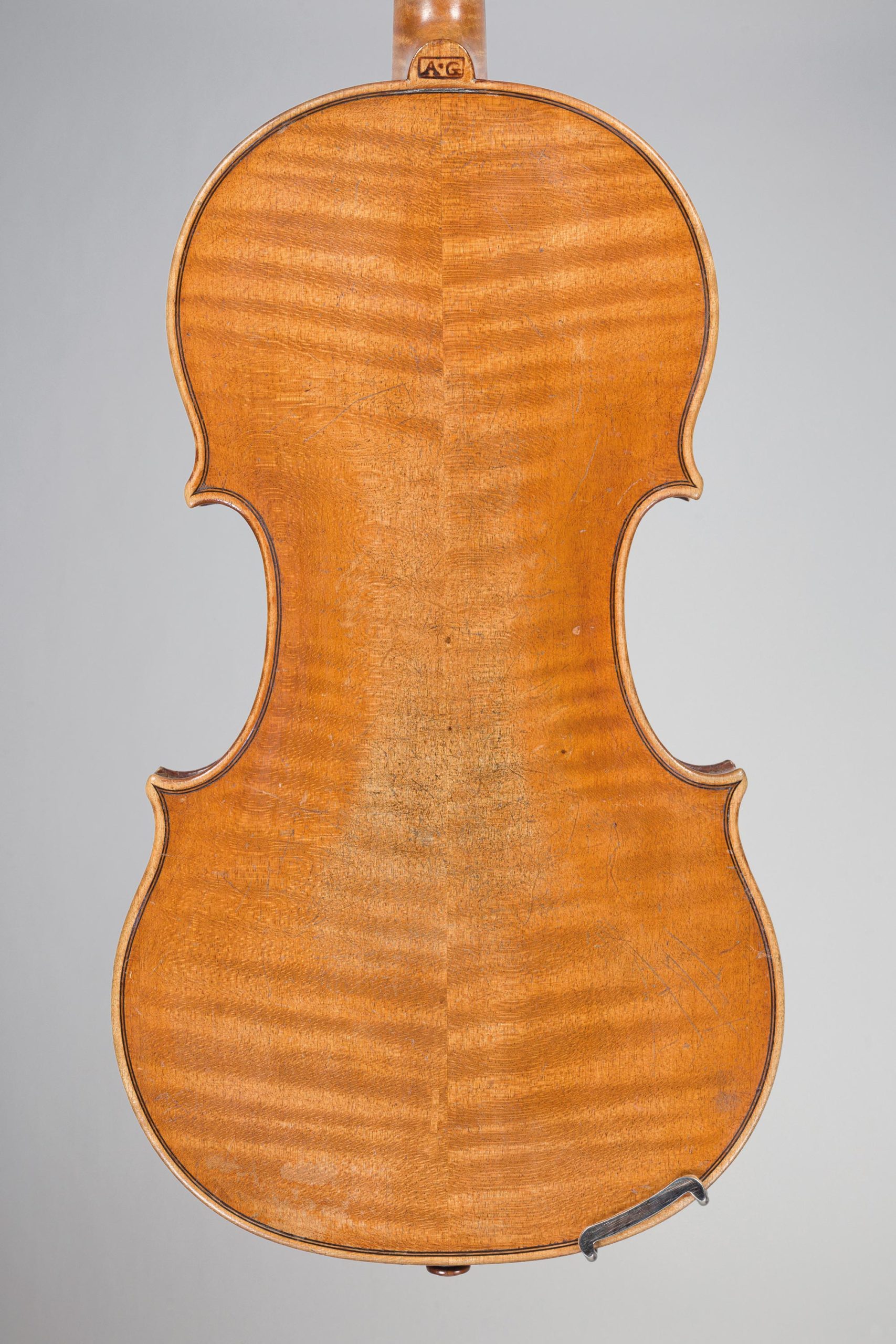
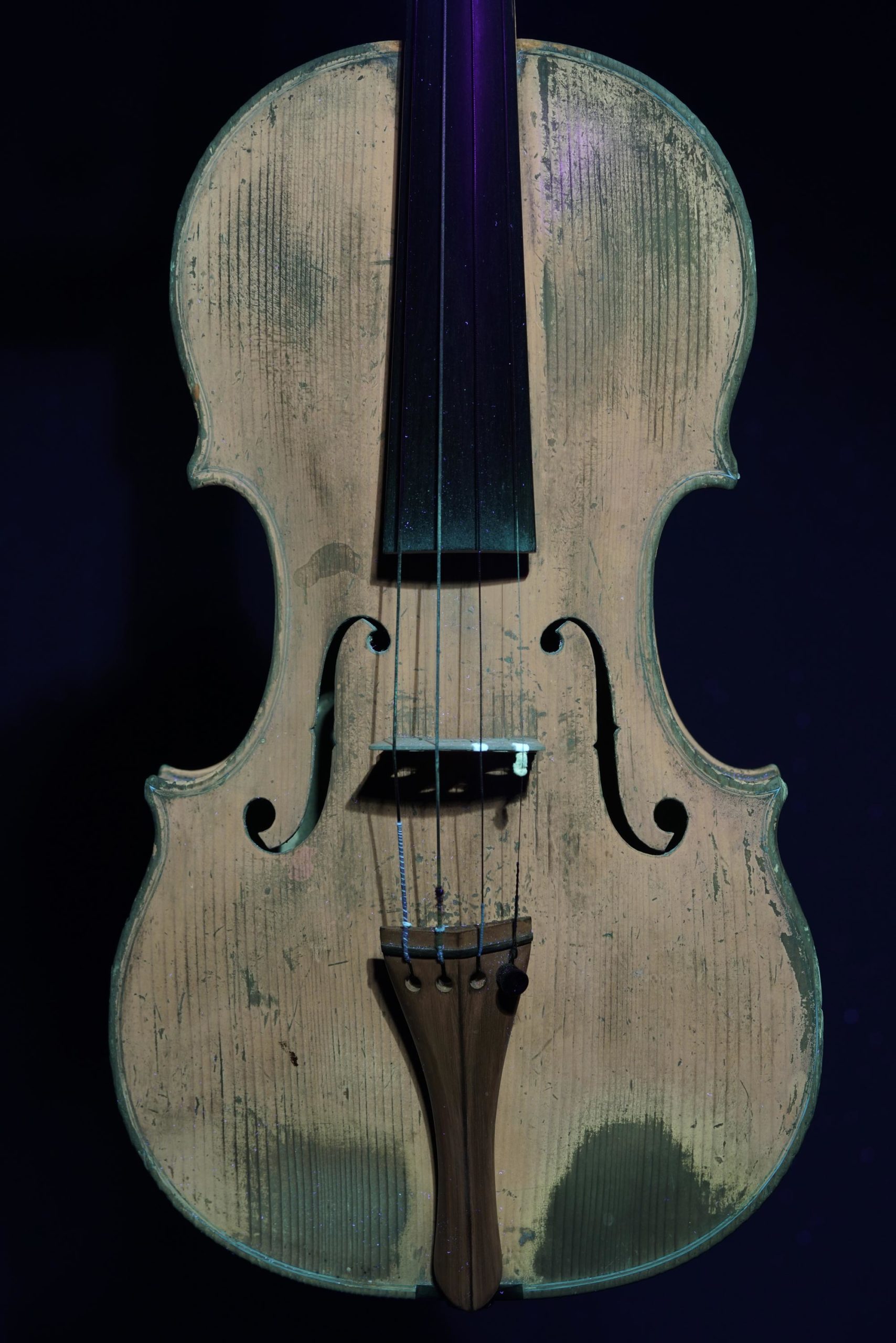
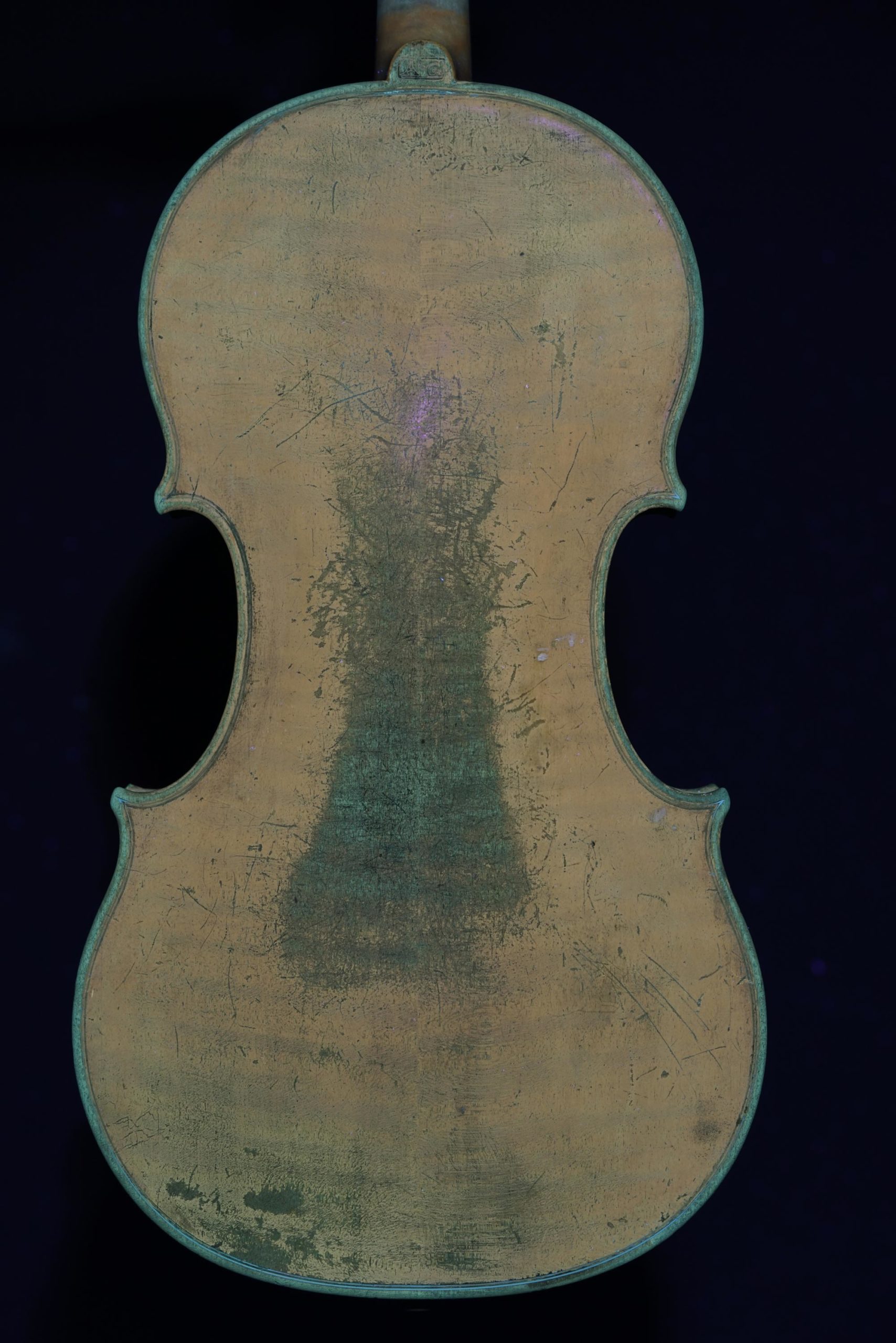
Le grand savoir-faire et la cohérence stylistique de Gragnani apparaissent nettement lorsque l’on regarde le violon de plus près. Le traitement des filets dans les coins est particulièrement intéressant, puisqu’il témoigne de l’attention minutieuse du luthier à ce que ses filets se rejoignent exactement au centre de l’extrémité de chaque coin, en une pointe dont la fin est presque imperceptible et qui se prolonge jusqu’au bord. Plusieurs exemples témoignent du perfectionnisme de Gragnani, qui reprit avec du mastic certains filets afin de les recentrer et de les prolonger parfaitement au centre du coin.
En outre, Gragnani choisissait des bois de qualité donnant du caractère à ses instruments, à l’image du violon de la vente Vichy Enchères du 2 juin 2022, dont la table est réalisée à partir d’un bois à accroissements larges. Chose assez rare pour des instruments de cette époque, on retrouve à l’intérieur de ce modèle le tasseau supérieur ainsi qu’un clou d’origine.
Antonio Gragnani était exigeant et fier de son travail, puisqu’il marquait ses instruments de ses initiales à plusieurs endroits, comme c’est le cas de ce violon marqué au niveau du talon, du bouton et sur la table au niveau du pied de manche en dessous la touche.
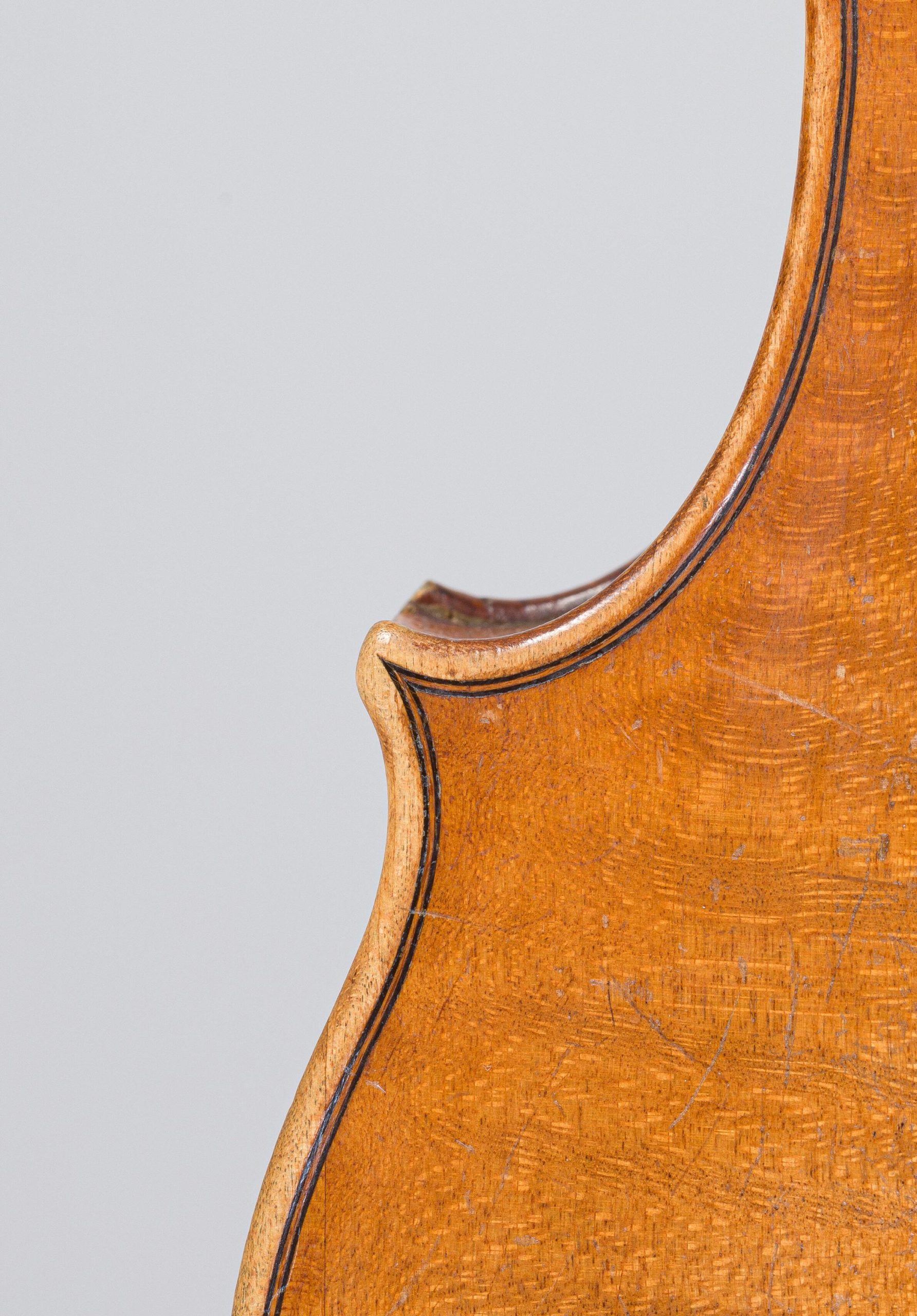
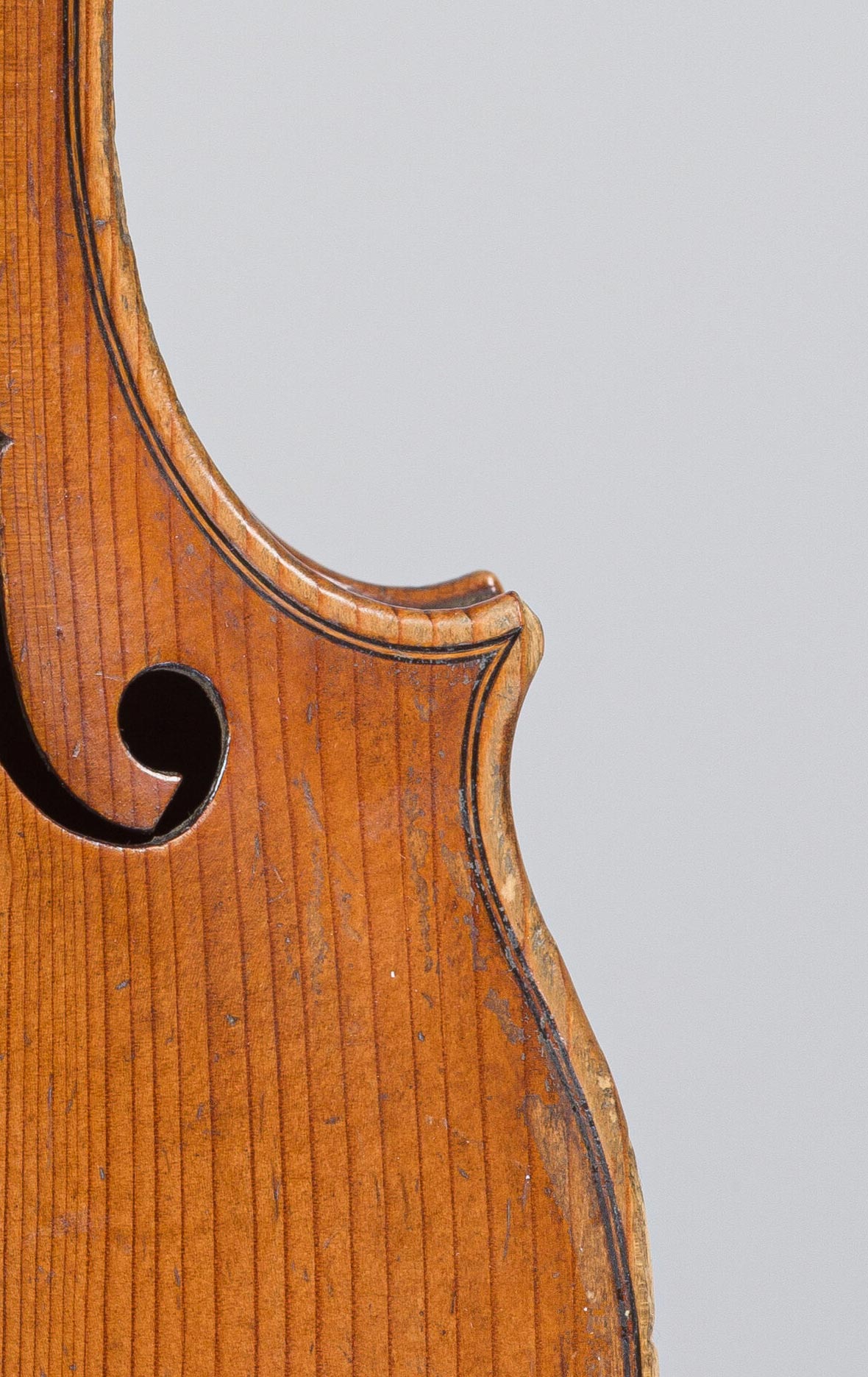
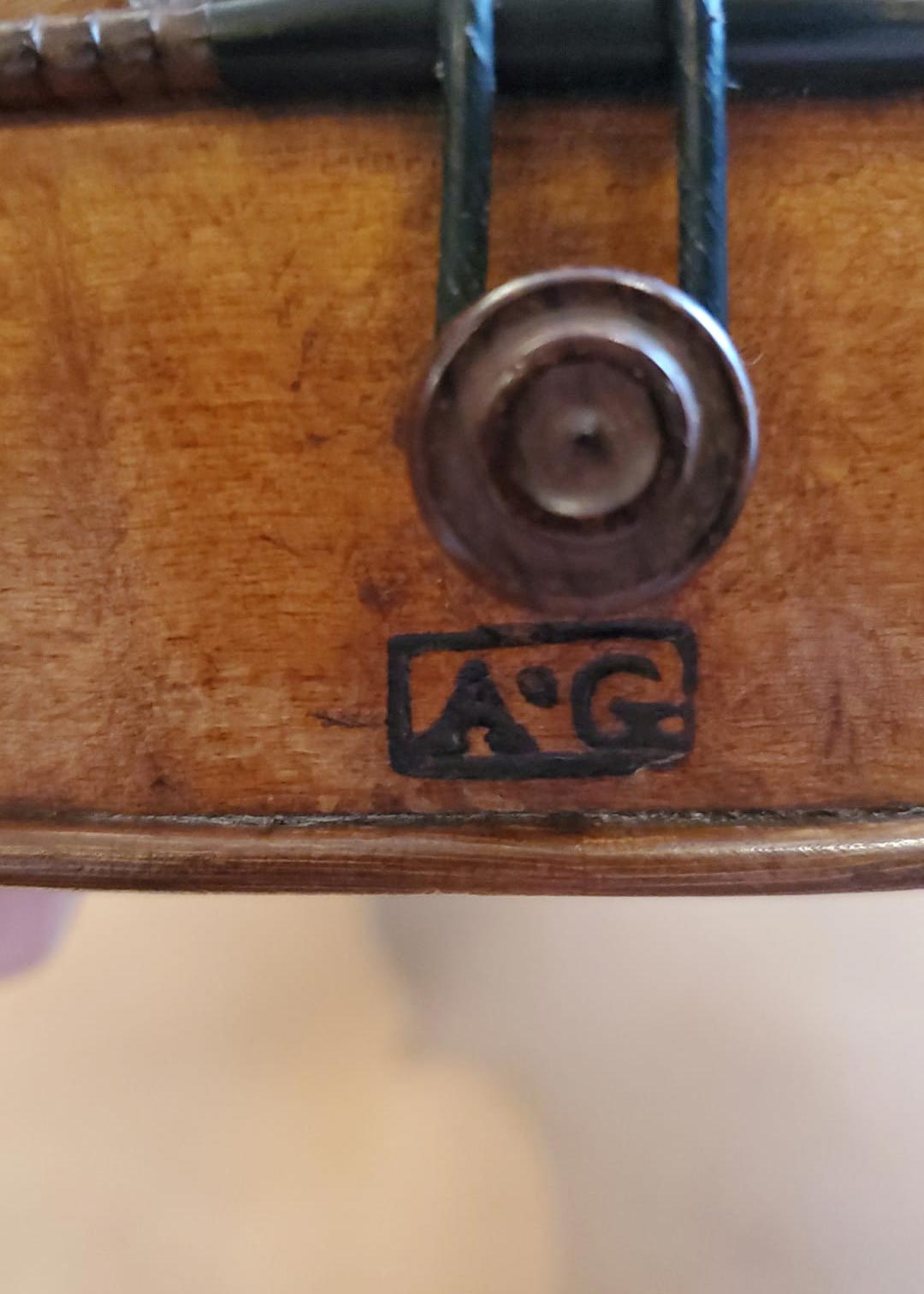
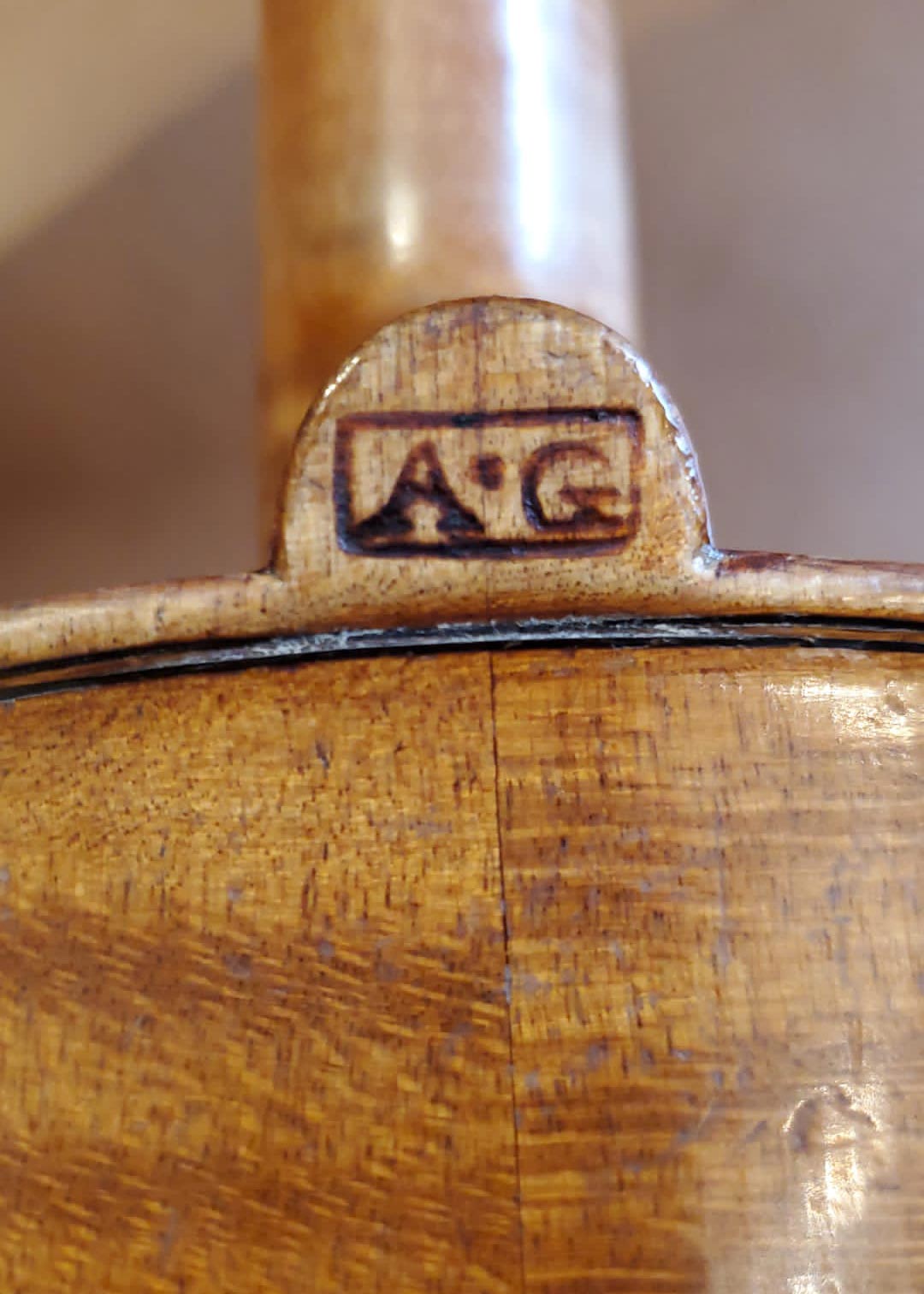
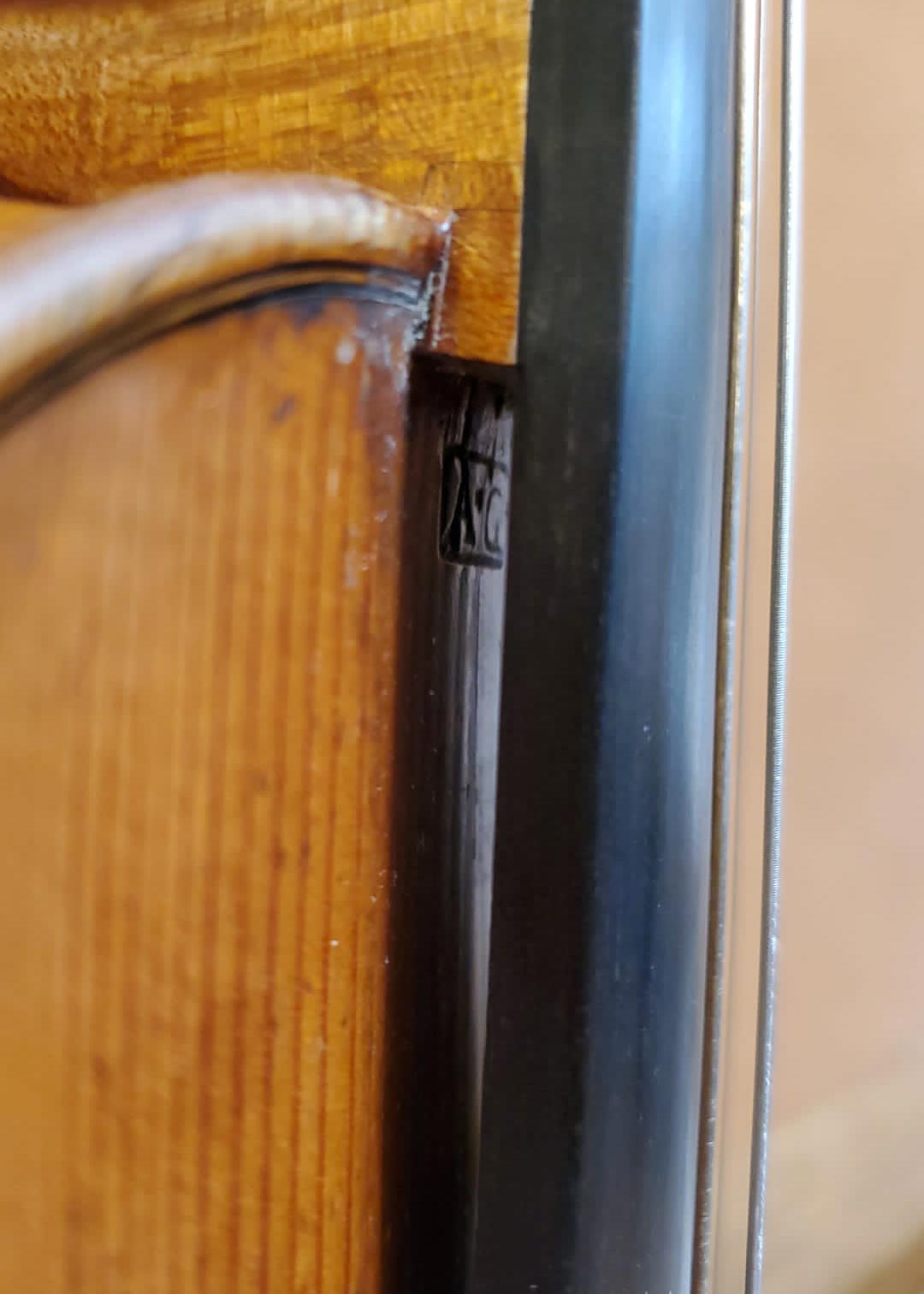
Rendez-vous le 2 juin 2022 à Vichy Enchères pour suivre la vente de ce violon charmant et évocateur de la vie portuaire de Livourne du XVIIIème siècle !
Antonio Gragnani is a unique personality in the history of violin making, whose work is synonymous with freedom and evokes the heyday of the port of Livorno. Freedom, because Gragnani worked all his life in Livorno, on the fringes of other schools, which allowed him to develop his own unique style. The craftsmanship of Antonio Gragnani, which was influenced by the very active port city where he worked and by the materials arriving from overseas through the shipping trade, gave his instruments a singular and evocative charm. Vichy Enchères invites you to travel back in time with this remarkable violin by Gragnani, the violin maker of Livorno…
Although the name of Antonio Gragnani is known in the field of violin making, the man himself is much less so. Until recently, we actually knew very little about this great violin maker. It is only during the last decades that research into historical documents has lifted the veil on part of his life. We summarise the results of this research below. Antonio Gragnani was born on 13 February 1728 in Livorno and came from a family of musicians who were active in the city. His father, also a violin maker, was none other than Onorato Gragnani – long thought to have been one of his sons, incorrectly.
Antonio Gragnani’s work was influenced in part of his father’s making style and techniques, particularly in the design of the models, as evidenced by the comparison of the violin from the sale of 2 June 2022 with an instrument from his father bearing the label « Antonius Gragnani” (Vichy Enchères sale, 11 June 2015). This comparison highlights a stylistic similarity in the overall design, the curve of the C-bouts and the design of the corners.


Antonio had a son, Giovanni Pietro Gragnani (1765-?), who also became a violin maker and who is recorded in various registers under the title of chitarraio, i.e. maker of plucked and bowed string instruments. We also know that he had a second son named Filippo (1768-?), but he does not seem to have carried out the family’s trade. However, the violin making tradition in the family was perpetuated, since Antonio’s daughter, Maria Elizabetta, had a son, Gaetano Bastogi, who also became violin maker in Livorno and was renowned for his lutes and zithers[1]. In his dictionary, René Vannes also mentions two other violin makers belonging to the Gragnani family, Gennaro and Jacobo, both active during the first half of the 18th century.
[1] Laurent Grillet,Les ancêtres du violon et du violoncelle, 1901, T2, p 187.
Antonio Gragnani seems to have been active as a violin maker exclusively in Livorno, which was, since the arrival of the Medici in 1500, one of the most important ports at the time. Therefore, although Cremona is the most famous centre of violin making in Italy, the prosperity of the city of Livorno was a fertile ground for the development of a local violin making trade. Antonio Gragnani seems to have practiced his trade there from the 1740s until the end of the century. The date of his death is unknown, but it occurred after 1792, as he is recorded as having taken part in the marriage of his son Giovanni Pietro that year.



La production d’Antonio Gragnani est de haute qualité et a très tôt séduit les grands collectionneurs, et en premier lieu le Grand-Duc de Toscane Léopold II. Bien qu’il n’existe aucun document officialisant la relation entre les deux hommes, un violon aujourd’hui conservé à la Galleria dell’Accademia de Florence faisait originellement partie de la collection du Grand-Duc et apparait dans un inventaire de la collection de la famille en 1829. Réalisé avant 1770, l’instrument est caractéristique du style de la première époque de Gragnani, comme en témoignent son modèle, la taille et le dessin des ff, ou encore le traitement de la tête.
More recently, an Antonio Gragnani violin from 1788 was in the collection of one of the greatest collectors of the late 20th century, Laurence Witten, to whom the Metropolitan Museum paid homage in 2015. Witten had a keen eye for picking instruments and only selected “the earliest, best preserved, and historically most important bowed stringed instruments known to survive in order to trace more systematically the early history of violin making in the chief Italian centers. » This collection demonstrates the importance of Gragnani, since his instrument took pride of place in it, alongside a cello by Andrea Amati and a viola by Andrea Guarneri.
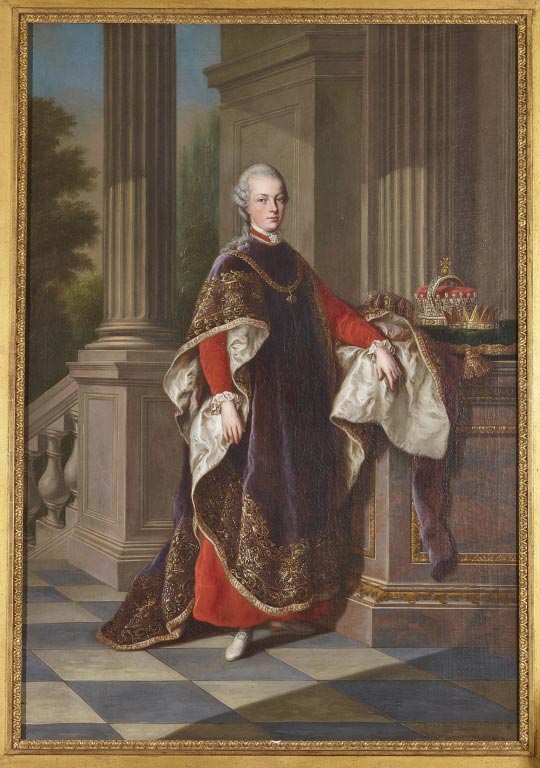


The greatest museum collections also include instruments by Antonio Gragnani, once again attesting to the importance of the violin maker from Livorno – especially since his instruments are quite rare. The examples kept in museums give an overview of the high quality of Gragnani’s craftsmanship and the diversity of his production. For instance, the Grassi Museum für Musikinstrumente of the University of Leipzig has in its collections a superb viol made in 1791. This type of instrument is highly unusual in the output of violin makers. Note, however, that Antoine Vidal mentions in his work on bowed instruments a five-string pardessus de viole which featured in the exhibition at the Kensington Museum in London in 1872 and which bears the label “Fecit anno 1741”[1]. This instrument is most likely the one now kept in the Victoria & Albert Museum, despite the museum catalogue indicating that the instrument’s label reads: “Antonius Gragnani fecit / Luberti anno 174(?)1”[2]. Antonio Gragnani’s instruments always bear witness to a very distinctive personal style and demonstrate their maker’s deep stylistic research and an assertive personality.
The Staatliches Institut für Musikforschung in Berlin also keeps a rather rare instrument in the violin maker’s output: a viola dated 1786. Indeed, violas are less common in Gragnani’s work and since 1930 only three have surfaced on the market.
Finally, we should mention that cellos by this maker are also particularly rare. Gragnani therefore seems to have made violins his speciality, although only a limited number of these are known. The National Music Museum at the University of South Dakota has an example made in 1788, one year before the one in the Vichy Enchères sale of 2 June 2022. Despite their stylistic similarity, the f-holes of the violin at the National Music Museum are slightly less narrow and the corners are still very stretched out, and are reminiscent of the Cremonese style, whilst the instrument in the 2 June sale is based on a more personal model.
[1] Antoine Vidal, Les Instruments à archets, tome I, 1876
[2] Howard Schott, Anthony Baines, Catalogue of Musical Instruments in the Victoria and Albert Museum, V&A publications, 2002




The remarkable craftsmanship of Antonio Gragnani results from a fine balance between taking inspiration from the Cremonese masters and developing a personal style. The maker is known for his elegantly designed violins, often influenced by the work of Stradivari, Guarneri or even Amati, but with a style that is always very recognizable. His instruments are renowned and appreciated by musicians for their tonal range and their power.
One example is conserved in the Smithsonian National Museum of American History in Washington: a beautiful violin from 1783 on the Amati model, but more elongated in shape and with a smaller pegbox.
Gragnani’s work, distinguishable by his meticulous craftsmanship, is indebted to the Cremonese masters, without being a mere copy. In particular, he made a few Stradivari-type violins, but, by reducing their proportions, produced more delicate instruments; the violin dated 1784, kept at the Galleria dell’Accademia in Florence and coming from the historic collection of Assunta del Bello, is a good example of this.
The violin in the sale of 2 June 2022 is also made after a Stradivari model, but features typical elements of Gragnani’s work. Indeed, Gragnani’s instruments have rather elongated, thin and very distinctive heads. In general, Gragnani’s instruments have strong curves. The volute of this violin is fine and elegant, oval in shape and stretching vertically, harmoniously hollowed out and with a protruding eye. The back of the head mortise is strongly carved and the pegbox follows a characteristic “S” shape.





The singular nature of his work is partly explained by the place where he exercised his trade, Livorno, a city in which he worked all his life after possibly training in Florence, which did not seem to have influenced his style. In the 1700s, the port of Livorno was very important and the city had become a centre for trading goods with the rest of Europe. In 1737, Livorno was granted the status of free port and became exempt from customs duties. This status made of Livorno the main port for passengers and goods travelling to and from Italy. This historical context could explain the foreign influences, in particular Flemish and German, sometimes perceptible in Gragnani instruments.
In addition, the city’s maritime trade provided Antonio Gragnani with materials that were different from those used by his contemporaries working inland, therefore making his output unique. For instance, Gragnani is one of the rare Italian luthiers to have used whalebone for his purfling – something that can also be found amongst Flemish makers. This material gives a shine to the purfling and a refined look to the instruments.
The violin in the sale of 2 June 2022 provides a fine example of this, with its very precise purfling that reflects the light. Examination under UV shows that it is indeed whalebone, since it appears white under black light.




Gragnani’s superior craftsmanship and coherent style are clearly apparent when one takes a closer look at the violin. The placement of the purfling in the corners is particularly interesting, and demonstrates the meticulous care the maker took to ensure that his purfling strips met exactly in the centre of each corner, forming a fluted spike whose end is almost imperceptible and extends to the corner end. Several other examples attest to the perfectionism of Gragnani, who used filler in certain cases to recentre the purfling and extend it perfectly to the middle of the corner end.
In addition, Gragnani selected choice wood for making his instruments, giving them more character in the process, as with the violin in the Vichy Enchères sale of 2 June 2022, whose front is made of wood with large growth rings. In addition, this instrument has retained its top block and one original nail in it, which is something quite rare for instruments of this period.
Antonio Gragnani had high standards and was proud of his work, and he branded his instruments with his initials in several places. This is the case with this violin, which is branded at the neck heel, the button and on the front towards the base of the neck below the fingerboard.





We hope to see you on 2 June 2022 at Vichy Enchères to take part in the sale of this charming violin, so evocative of 18th century port life in Livorno!